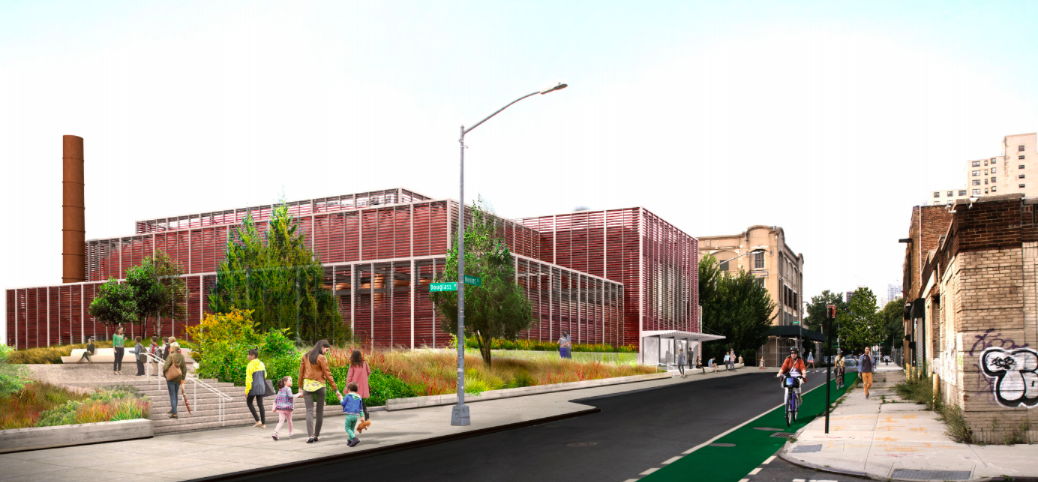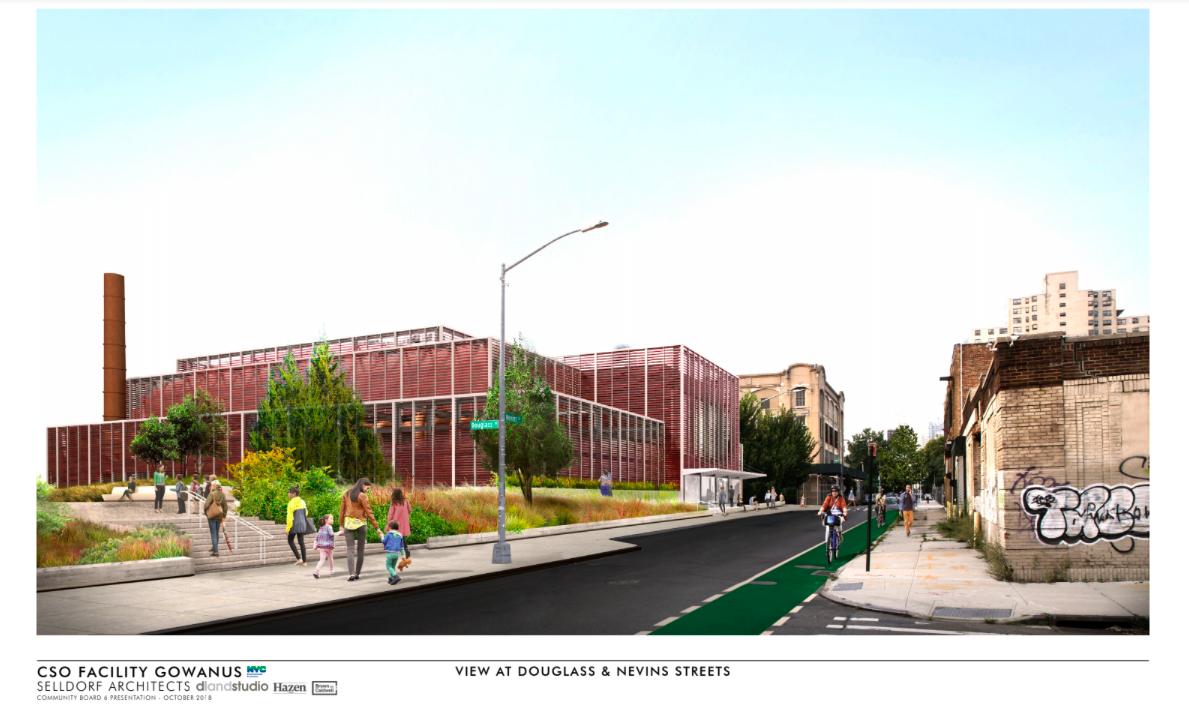DEP Proposes Tunnel As Alternative To CSO Tanks For Gowanus Superfund

GOWANUS – The NYC Department of Environmental Protection (DEP) has proposed the use of a tunnel to collect excess combined sewage from the Gowanus Canal instead of two CSO (combine sewage overflow) tanks currently planned in the EPA’s cleanup of the Superfund site.

Over the past several years, DEP engineers and planners have been working to develop new methods to clean waterbodies across New York City, conducting research on “tunneling in urban areas,” a spokesperson for DEP told Bklyner. The agency plans to construct overflow tunnels for its Newtown Creek and Flushing Bay projects. The construction of a tunnel for the Gowanus Canal could be done for “roughly the same cost as the tanks,” DEP says, which is currently estimated at $1.2 billion.
In October, DEP presented to Brooklyn Community Board 6 its revised design for the Gowanus CSO Facility which will include an eight-million-gallon CSO tank (a second four-million-gallon CSO tank will be installed mid-canal, by the Fourth Street Basin), head house, and 1.6 acres of open space. The agency recently completed its acquisition of the Gowanus Station Building at 243 Butler Street, as well as 242 and 270 Nevins Street via eminent domain for the new facility.
According to DEP, the benefits of a tunnel include:
- a larger storage capacity (currently a minimum of 16 million gallons) and the ability to collect a greater amount of combined sewer overflow than the two tanks, helping to keep the canal cleaner and healthier
- a “smaller footprint” on the site
- less disruptive construction (a reduction in noise, dust, visible equipment)
- the possibility of expanding the tunnel in the future to meet growth in the area (whereas storage capacity of the tanks cannot be increased)
- more flexibility for the public open space currently planned above the CSO tank on Nevins Street
The construction of the tunnel would entail the building of vertical shafts (approximately 60 feet in diameter each)—two at the northern end of the project (where the current CSO facility is planned) and one in the vicinity of the Salt Lot (2nd Avenue & 5th Street). After the shafts are created, a tunnel boring machine will perform a majority of the work underground—out of sight of neighbors, according to DEP. The shafts would run approximately 150 feet deep and connect to a tunnel measuring approximately 30 feet in diameter that runs “below the footprint of the Canal.” The construction schedule for the tunnel is expected to be similar to that of the tanks.
Like the tanks, during a rainstorm, any combined sewer overflow would be directed to the tunnel where it would be held “until there is capacity in the system for it to be pumped to a wastewater treatment plant.”
EPA Regional Administrator Peter Lopez shared preliminary information about the proposed tunnel with members of the Gowanus Community Advisory Group (CAG) during a meeting on Tuesday, November 27.
“We’re trying to understand the pros and cons of that, and ultimately the decision from EPA will be ‘What does that mean for construction progression, timeframe, and – ultimately – tunnel versus tank? Is there an environmental benefit that may come from one or the other?'” Lopez said at the meeting, as reported by Red Hook Star.
The Gowanus Dredgers posted their suspicions about DEP’s proposed tunnel on social media, questioning the cost, timeline, and motivation behind the change as well as the feasibility of digging a tunnel in “polluted alluvial soil.”
If the EPA determines that the tunnel is the preferred approach, the design plans for the head house facility and public space will be reconfigured with public input, the DEP representative says.
“We have been evaluating information on the tunnel proposal that New York City has provided. No decision will be made without prior community input and a presentation to the Gowanus Canal Community Advisory Group,” EPA spokesperson Elías Rodríguez wrote in an email responding to Bklyner’s request for further comment from the agency on the tunnel plan.
“The city is under an order to design the tanks per the cleanup plan (Record of Decision),” Rodríguez continued. “Before we can make any decisions, EPA must first carefully weigh the benefits and potential consequences, including impacts on the implementation schedule, for the Superfund cleanup and effectiveness of solids capture. Once we have completed our evaluation, we will discuss this further with the Community Advisory Group.”
It was also announced at Tuesday’s CAG meeting that the pilot dredging and capping project at the 4th Street Turning Basin has been completed, according to Red Hook Star.
“It’s the first time a portion of the canal has a clean bottom in 150 years,” EPA Project Manager Christos Tsiamis said at the meeting. The EPA will use information collected from the pilot project to determine which methods to use in cleaning the rest of the canal.
DEP will present the proposed tunnel option to the Gowanus CAG at the group’s next meeting scheduled for Tuesday, January 22 at 6:30pm at Mary Star of the Sea, 41 1st Street (between Bond & Hoyt Streets).




